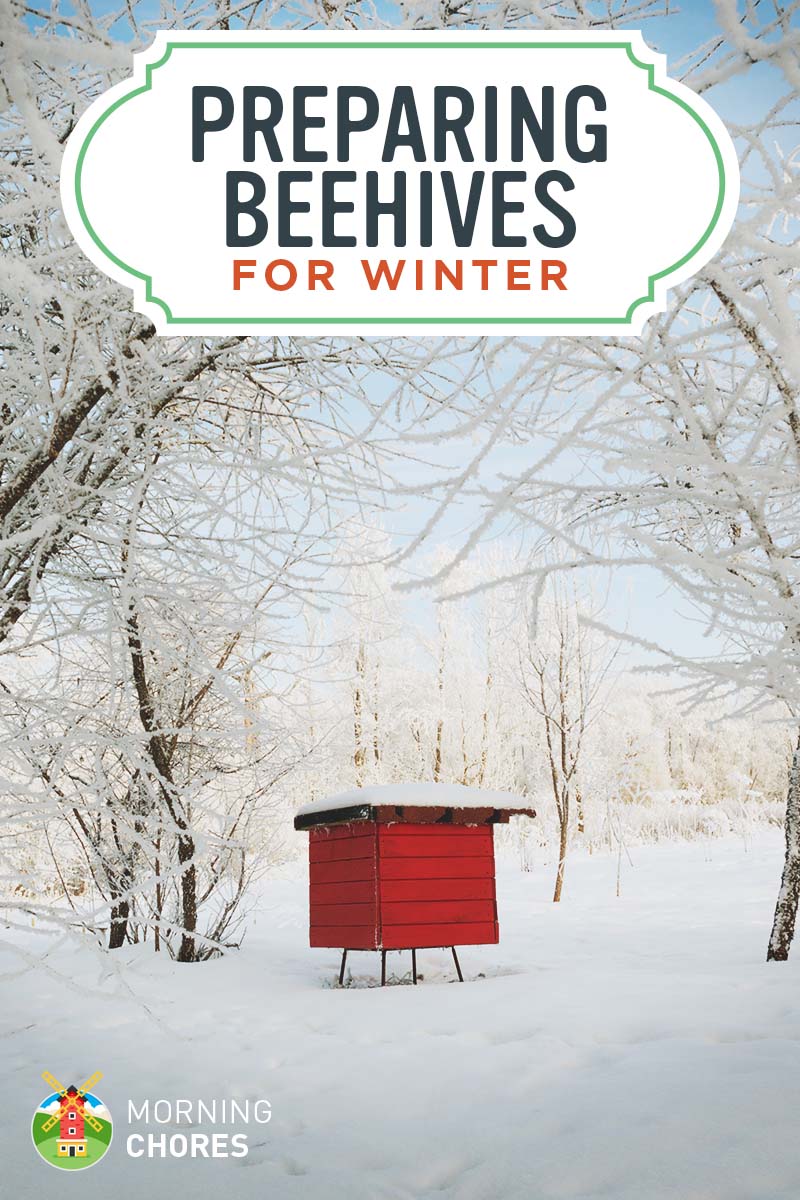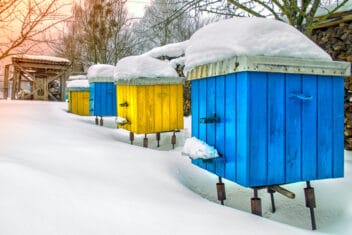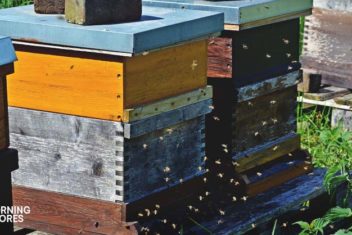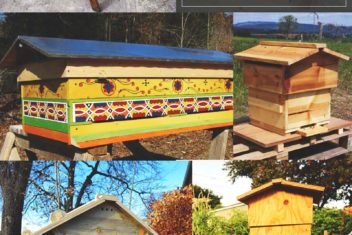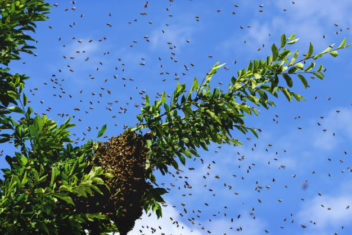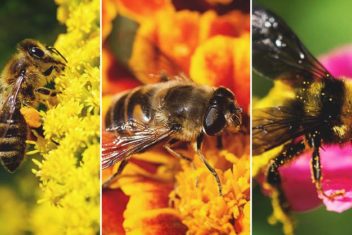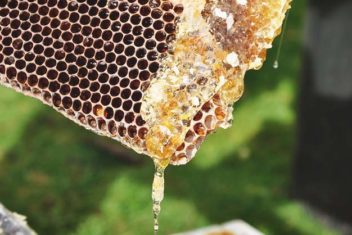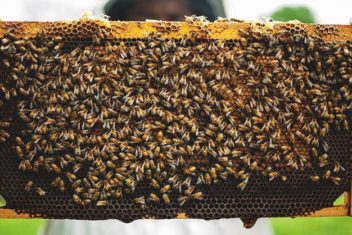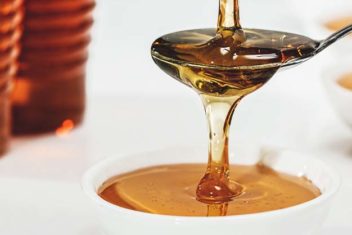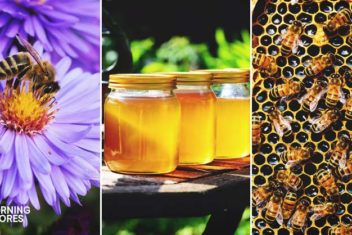Are you a beekeeper that loses their hive every (or almost every) winter?
Do you know that learning how properly winterng your bees could potentially save your hive each year?
Well, if not, then you need to keep reading. There are many reasons bees die each winter. You may not be able to prevent all of them, but you could potentially prevent a few of them.
So I want to share with you a few tips while wintering bees to give your honeybees the best chance of survival. I use Langstroth hives so most of the tips will apply to this type of hive.
1. Move Your Bees
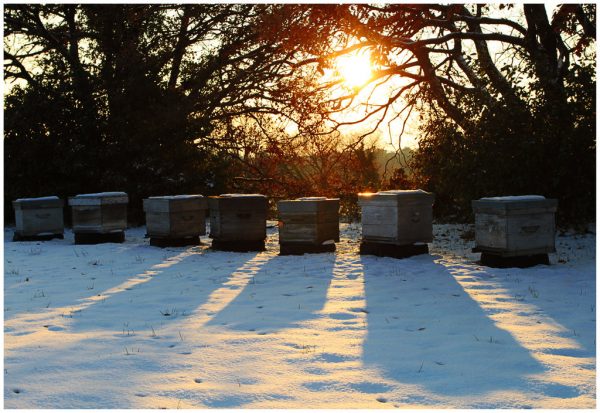
photo by Deviant Art
Since we know winter is upon us, we also know it is only a matter of time until it will be darker longer.
So now is the time to pay attention to the yard where the bees are kept. You will want to see where they can get the full winter sun (or as close to it as possible) for most of the day. This is very important to help keep the temperature in the hive up.
Once you find that location then you will have to get innovative so you can move the bees there. Remember, you don’t want to put them in an area with a lot of traffic.
But if there is any way possible to move them to the location with the most sunlight then that is what you’ll need to do to give them the best chance at keeping warm.
2. Give Them a Wind Breaker
I don’t mean that you need to go out and buy your bees’ coats. (But how cute would that be?) Moving on, but they do need to be in a location where the wind is blocked as much as possible from their hive.
See, you have to think about winter storms. The winds pick up, and the next thing you know your hives are on their faces with exposed and shivering bees.
When that happens, don’t be surprised if you lose your hives. With this in mind, though, you can plan ahead.
So what you should do is place them near a tree line, or put up a fence around them to help block some of the wind. My hives are personally set on the tree line right next to my garden. That way they get ample amount of sunlight at their entrance, but also have a tree line blocking the wind from behind the hive.
3. Don’t be so Stuffy
Do you ever get cabin fever during the winter? Boy, I do! When it is time to start seedlings my heart leaps for joy because I know I will be outside in my flip flops sooner rather than later.
Well, your bees won’t necessarily get cabin fever. However, they do need their hive to be properly vented so it won’t get stuffy. The actual reason for this is because honey bees gather together in a cluster inside the hive in order to produce warmth.
When they do this, they also put off a small amount of moisture. If air flow can’t get through the hive the moisture turns into condensation which will eventually be the death of your bees.
So what you can do is slightly vent the roof of their hive by tipping it up slightly at an angle. This will allow a small amount of air flow to get in there and let things breathe a little. Just not to the point of allowing your bees to freeze.
4. Shut the Front Door
Well, not all of the way. You don’t want to trap your bees, but if you have a large reducer on the front of the hive it is time to switch it to a smaller reducer.
The reason we do this is because during the summer the hive needs a larger entrance so bees can get in and out of the hive easily and more of them at one time. They are on a mission to collect food to make honey for winter.
But when winter hits, there aren’t as many bees in the hive so you don’t need as big of an entrance. Plus, they aren’t going to be flying in and out nearly as much. Their main focus is staying warm and keeping the queen warm.
So when you add the smaller reducer for the hive entrance, it still allows the bees to move in and out easily but stops the entrance from being so large which reduces the amount of wind and cold that can enter the hive.
5. Reduce the Size of the Hive
I’m going to talk about when to do all of this winterizing in greater detail a little further down.
However, this is something that you will do earlier on than some of the other items mentioned here. The reason is because some hives grow to be several bodies tall during the summer. It just depends upon how productive your bees are.
For instance, we had 4 hives this year that were 5 hive bodies tall. They were very busy, but I just had to decrease the size of the hive bodies because as the hive naturally shrinks preparing for winter, these oversized hives were stressing the queens out.
So we just took a few of the hive bodies away, and the hives seemed to level out again. But whether the actual size of your hives (not your bee population) are stressing your bees out or not, you’ll need to reduce the number of boxes.
The reason for this is, that the bees decrease in number over winter. So they won’t be able to take up all of that space. Instead, they cluster together for warmth. Meaning that the other areas of the larger hive just leave more space for them to heat which naturally they can’t.
So that means that you have a cold hive and ultimately frozen bees.
6. Cover Them
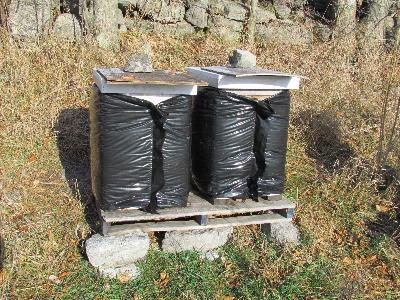
photo by B.C. Bee Supply
I live in the south so I don’t actually have to do this step. The reason is, we have cold winters but nothing in comparison to some northern areas.
So even when we have cold snaps, it usually doesn’t stay cold very long. Nor do we get a ton of snow either.
However, if you live in an area where you get lots of snow and constant cold temperatures it might be wise to invest in a hive cover. You simply slide them onto your hive and let them help to keep your hives a little warmer.
But be sure that they are on securely. I’ve heard reports of people not securing their hive covers properly, and they fly off during a winter storm.
So just be sure that you follow the directions thoroughly to get the best use out of them.
7. Feed Them
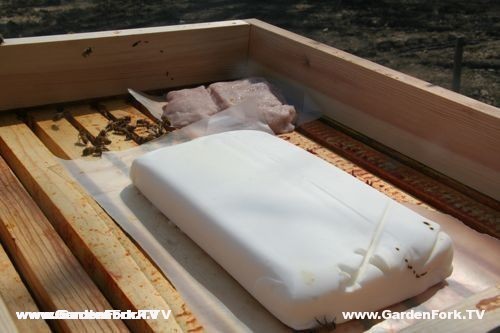
Photo by Gardenfork
Bees do not get out of the hive much during the winter. There isn’t much food for them anyway. Nor do they leave the hive when it is cold.
So you will have to give them a supply of food before winter sets in to ensure that they eat. You do this in two ways.
First, you can feed them fondant. You have two options with this. You can either buy fondant which in my area is about $5 a block. This should last one hive for the winter, in my experience.
Or you can actually make fondant. Here is a recipe and it seems rather easy to do considering it is made out of sugar, water, and vinegar. It should be pretty inexpensive too.
The second option is to feed your bees grease patties. You can buy them or make them. The ingredients are a little more complex than fondant, but the benefits of grease patties are many too. They are known to help deter mites from the hive.
Plus, some people actually use both of these options together. That way your bees are fed by fondant, but still get the benefits of the patties.
8. Don’t Forget About Them
You shouldn’t go outside and go through your bees in the winter. When wintering bees, you need to pretty well leave them be.
But there is one exception. If you have a day that is above 40 degrees Fahrenheit then you should quickly raise the lid to the hive just to make sure that your bees’ food supply isn’t running low. This is important.
And the reason for that is that most hives are lost in the winter because of freezing and starvation.
Now, how sad would that be if you could salvage your hive simply by adding a little more fondant or a few more grease patties?
So just be aware of what is going on inside your hive. Again, don’t go through your hives. Just briskly lift the lid, make sure they have enough food, and then close it and place the hive cover back on (if you are using one.) It is that simple.
9. Wintering Bees at the Right Time
There is no specific date as to when you should begin wintering bees. You just have to be aware of what is going on in your hive and what the weather is doing.
So if you go out in your hives and you realize that the queen isn’t laying in all of the hive bodies, then you need to begin to shrink the physical size of the hive. We just did this a few weeks ago.
As far as the rest of the steps, when you realize that the weather is getting cold and staying that way, then it is time for wintering bees. Some suggest doing this at the end of October or sometime in November.
Really, it depends upon where you are located and what your weather is like that year.
For instance, we had a warm winter last year. So we didn’t have to winterize the hive until December. But if you live someplace tropical, then obviously you won’t have to worry about winterizing your hive period.
So just do some research about keeping bees in your area so you’ll know when most seasoned beekeepers in your location begin wintering bees.
10. Stay Calm
Our first year keeping bees, we almost panicked during the winter. Think about it, you invest a lot of money into getting started into beekeeping to not even be sure you will have a hive the next spring.
Well, though this fact remains (because bees are certainly their own creatures) you just have to stay calm and roll with it.
All you can do is keep a watchful eye at a distance and try to help your bees if you see a problem while it is cold. Bees have been around for a long time.
So though winter is a tough time for them, they’ve clearly toughed it out before. Not to mention, winter bees are completely different from the bees you see during the spring. It is really neat how the hive knows to lay a tougher bee to protect the queen during winter.
Truly, bees are just fascinating creatures. So there are no promises in keeping bees, but they are rewarding creatures. And if you do all you can to keep them healthy and warm over winter with wintering bees, then realize that you’ve literally done all that you can do.
So take a deep breath and eventually, winter will pass.
Well, that’s all of the tips I have on wintering bees. Like I said, bees are their own creatures so we can only do so much to help pull them through the winter months.
